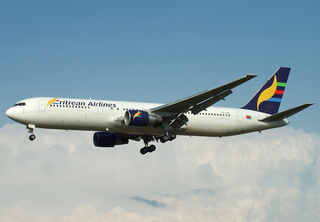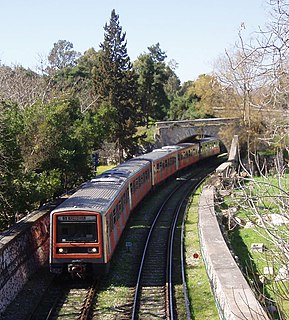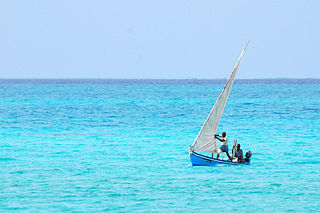Because Cyprus has no working railway system, various other methods of transport are needed to ensure the proper delivery of any cargo, be it human or freight. Since the last railway was dismantled in 1952, the only remaining modes of transport are by road, by sea, and by air.

Transport in Eritrea includes highways, airports and seaports, in addition to various forms of public and private vehicular, maritime and aerial transportation.
Modes of transport in Fiji include rail, road, water, and air. The rail network is mainly used for movement of sugar cane. Suva and Lautoka are the largest seaports. There are 122km of navigable inland waterways. There are two international airports, one other paved airport, and over 20 with unpaved runways. With 333 tropical islands that make up this country, expect to use various modes of transport to get to your destination.

Transport in Greece have undergone significant changes in the past two decades, vastly modernizing the country's infrastructure and transportation. Although ferry transport between islands remains the prominent method of transport between the nation's islands, improvements to the road infrastructure, rail, urban transport, and airports have all led to a vast improvement in transportation. These upgrades have played a key role in supporting Greece's economy, which in the past decade has come to rely heavily on the construction industry.

Transport infrastructure in Guinea-Bissau is basic, with most roads outside the capital Bissau being unpaved.
Transport in Hungary relies on several main modes, including transport by road, rail, air and water.
This article provides an overview of the transport infrastructure of Latvia.
Transport in Lithuania relies mainly on road and rail networks.

Transport in the Maldives includes, road, water and air.
This article describes the transport in Peru.
As a densely populated country in a central location in Central-Southeastern Europe and with a developed economy, Romania has a dense and modern transportation infrastructure.
There are no railways in Saint Vincent and the Grenadines.
Transport in São Tomé and Príncipe relies primarily on road infrastructure for local needs and airports and sea travel for international needs. São Tomé and Príncipe does not have railways.

The Republic of Suriname has a number of forms of transport. Transportation emissions are an increasing part of Suriname's contributions to climate change, as part of the Nationally Determined Contributions for the Paris Agreement, Suriname has committed to emissions controls for vehicles and increased public transit investment.
This article deals with the system of transport in Syria, both public and private.

Vanuatu's undeveloped road system, with fewer than 100 miles of paved roads, consists mostly of dirt tracks suitable only for four-wheel-drive vehicles. Every island has one or two short airstrips where Vanair’s Twin Otter planes land two or three times weekly. In addition, every island has a small port or wharf where small cargo ships and boats regularly dock.







